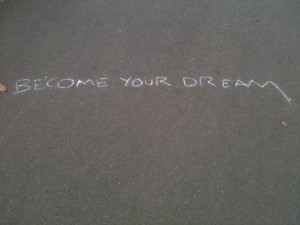A couple of years ago, I was roaming around MoMA, not really going anywhere, just looking, and I turned a corner and saw a basketball hoop on an outrageously-tall pole leaning against the stark white of cavernous gallery wall. The glass backboard, surrounded by a metal frame brandishing flurries of fan-like ornamentation, was topped with a three pronged candelabrum. I stopped. And I looked, really looked. Thinking about this now, the question that keeps coming back to me is: “What’s it like to find the artist through the work, to know the artist as spirit behind the assemblage?” Maybe I didn’t ask the question out loud that day, but I thought it. I knew what basketball goals were supposed to look like, and this amalgam of rust, glitz, and hoop translated to chandelier or jeweled earring, took me beyond a game I had spent years playing. It took me to David Hammons.
This week I hurried across the park and buzzed for entrance at L&M Arts, a gallery housed in a mansionette on East 78th St. in Manhattan, not far from the Frick. The doorman let me in, and on the first floor beside the grand curved staircase the artist’s signature, in what appeared to be pencil on a blank wall, announced the show. The New York Times’ review headline that day had been, “The Upper East Side Goes Grungy in David Hammons’s Gallery Show,” and the contrast of Hammonds’s work with the mansionette’s ornate dentil moldings and grand staircase reinforced L&M’s mission. In the The Times’ review of this show, Holland Cotter wrote, “We think Modernism, but we also think street people, construction sites, trash.”
I was prepared for the trash bags because I’d read the review. Trash bags—torn, ripped, gaping—draped over large works on canvas. An armoire was pressed face-first against a painting, left there as if abandoned by careless movers. And tarp—crinkled, almost sparkling material—hid the details of paintings. The piece that stopped me though, like the basketball goal had at MoMA, was upstairs. The “painting” was in a parlor overlooking 78th St. and was approximately the same size and shape as the three other large pieces in the room. This “painting” consisted of two large sheets of clear plastic simply placed on top of each other with randomly frayed holes creating texture and space between the translucent square sheets. This was my favorite piece in the show—part useless plastic, part evening gown, part shroud. I felt I had met the artist again. There was no work, only intention and the whisper of experience.
The show closed on Friday, but some of David Hammons’s work is in the permanent collection at MoMA.
